Women’s bodies, male privilege, and the enduring secularist/religious binary in Bangladesh

On September 8, in an event organised by theater professionals to reflect on the future of Bangladesh, the newly appointed Director General of Bangladesh Shilpakala Academy Jamil Ahmed, posed a very important question addressing Bangladesh's Jamaat e-Islami: "Why must women wear the hijab in 2024?" The cheers from the crowd immediately after he uttered this indicates the weight of this question coming from someone in his position.
This question is important for several reasons. First, it was raised by a powerful, responsible authority of the state who also happens to be a secular Bangali Muslim man. Moreover, the question is targeted to an Islamist political party also dominated by powerful men, but who are instead orthodox Muslim. This question reveals some underlying historically developed assumptions and prejudices, while it also energises some problematic binaries at play in our social and political lives. It must also be noted that this question is not a new one for women in colonised and post-colonial societies.
This article discusses the implications and assumptions held in this question, and the danger of asking such a question for gender justice and solidarity between people.
I will start with the explanation he gives later about the real meaning of his utterance: If Islam mandated men to control their gaze, why do women still need to wear the hijab? The issue, however, is that he does not provide an explanation for the year-2024. One would think that patriarchy, sexism, capitalism, neocolonialism had become obsolete in 2024 if someone is so confused about why women have to cover themselves up. Rather in globalised 2024, when the hijab has transcended class, national, traditional and ethnic boundaries, posing this question risks being progressivist in a way that sees hijab as a regressive, outdated practice. There's a distancing created by this seemingly well-intentioned question between hijabi women who need someone to defend their rights for them and women who are secular, and hence "free." It should be noted that the DG's invitation to Jamaat to defend their stance on the hijab to him positions him as a person of institutional authority who can check for and save those Muslim women who have been forced to wear the hijab by Jamaat.
The question also resonates the enduring colonialist, orientalist outlook which has been instrumental in constructing the religious or traditional Muslim as the racialised inferior masculine other who oppresses "their" women through purdah. Thus, this question also becomes about "our women" and "your women" between secularists and Islamists. Why is it that, among the numerous imageries of disasters that can be associated with Islamism, the very first image that appears in full technicolour to secularists is the pitiful oppressed hijabi woman? To echo Joan W Scott's question: "Why has the veil been singled out as an icon of the intolerable difference of Muslims?" As if with secularism, patriarchy magically ends! Islamists, on their part too have their counter image of secular rule: underdressed promiscuous westernised temptresses in free rein.
This question also draws on the historically infamous secularist Muslim versus religious Muslim binary among Bangalis. This gradually unfolds as the DG provides his next piece of explanation cum defence: that he only wanted to know whether women wanted to wear the hijab of their own free choice—because that to him is acceptable—or whether Jamaat-E-Islami was forcing them to wear it. This is an unsatisfactory explanation, because it's unclear why anyone would still ask for the opinion of just one Islamist group about the varied roles and relevance of hijab in Muslim women's lives despite already knowing that women can and do make their own choices when it comes to the hijab. We must ask why there was this "spotlighting" on Jamaat as the custodians of Islamic thought and practices in Bangladesh. What they will be able to say regarding women covering up will only be a small narrative within the complex world of women in a Muslim majority country.
Moreover, why do only Islamists have to answer this? As Aisha Lee Fox Shaheed argues, "contemporary debates around the veil should begin with politics rather than theology." Considering this, do other stakeholders—whether secularist, nationalist or other religious leaderships—not have a role in maintaining and reproducing norms?
As I mentioned earlier, this is not at all a new question for Muslim women. From Algeria to Iran to Palestine, women have been in the middle of enraged debates over hijab. Historically, in times of external threats, such as occupation or invasion, and whenever the countering of these gave rise to crises of nationalist integration of a unified identity, women's bodies have been at the centre as the most contended element of the patriarchal family, and by extension the community, nation and state.
In the homogenising efforts of both colonial governance and anti/post-colonial nationalisms (religious and secular), all cultural identity differences converge violently on women's bodies as sites of reproduction of those differences which makes each faction or community unique. There's now a huge repository of growing scholarship on understanding how women's (and men's) bodies are coopted in the service of different types of power regimes to justify wars, invasions, dictatorship, democracy, etc. And as for women's clothes and the extent to which they should cover/uncover, religious groups and secularists in Bengal have been at loggerheads ever since British times because adapting to modern life meant education and mobility concerns for women in middle and upper classes. Each camp has vied to assert its dominance over women's visibility in their terms, with each endorsing "opposing" types of womanhood to fortify their ideologies and politics. Therefore, when asking the kind of question discussed in the beginning, one must recognise how anxieties with the hijab obfuscate broader social and political crises in a patriarchal society.
If anybody genuinely wants to know, as a feminist ally, why women "still" wear the hijab, I would like to direct them to the rich literature on women's debates over the concerns of purdah, mobility and productivity in just 20th century Bengal alone. Modern East Bangali society, in constant fear of "communal" violence, growing mixed-ethnic population in urban public spaces, and unequally developed economy/infrastructure, urgently debated on these issues. Until today, we've had all sorts of interpretations of purdah/veiling. Some women argue for modernising veiling for freedom, some find the sharee as modest as a burka, while some functionalise the burka because they refuse to be judged by womanly beauty standards, and many others practice certain forms purdah as assertions of womanly agency and right to follow Islam and be pious on their own terms. There is a legacy here of women challenging power as veiled beings.
So, directing this question to Jamaat and not to history becomes an unintended way of disenfranchising women and their complex narratives. Should anyone say that hijab is foreign culture, they must be reminded that hijab is just one form of purdah which became globalised in the backdrop of particular political historical contexts such as colonialism and imperialism, the rise of Wahabism-Salafism in response to these, and the symbiotic growth of both dominant Bangali nationalist politics and orthodox Islamist politics which kept alive the binaries traditional/modern, religious/secular, Awami League/Jamaat-Shibir to sustain power. As Marnia Lazreg reminds, hijab is not only a practice, it's also a discourse. Therefore, to see it as only a religious marker would be reductionist and oversimplistic considering its history and Bangali/Bangladeshi history.
To sum it up, the question "Why should women wear the hijab in 2024?" is problematic because it uncritically employs historically divisive binaries, creates difference between women and also among women and men. It further disenfranchises concerned women, privileges Jamaat and positions its men as co-legitimately and oppositionally placed against secularist men, overall perpetuating fear and mistrust and hindering solidarity.
I recall Lila Abu-Lughod's overused formulation that Muslim women "do not need saving." They need, like every other person, understanding and solidarity. That can only happen when there's reflexivity in critical thinking when forming and asking questions about Muslim women and hijab in Bangladesh. And for that, one first has to stop taking for granted that women are impressionable and credulous, and that if they're not controlled, men of the "other" camp (religious/secularists) will benefit. Women should not have to doubly prove themselves and answer to male authority in either camps. There are women who don't want to be in the middle of a duel between two groups who legitimise and co-produce each other. So, while I know that the question was intended to be benevolent, in the context of the historical power relations that I have briefly touched upon in this article, talking about women's bodies has never been, and can never be, a neutral question.
Imagine this: would it be respectful to ask those hijabi women who, uncoerced by men, were active in the recent uprising in Bangladesh, if they wear their hijabs of their own volition?
Mithila Mahfuz is a teacher and researcher, and member at Lokayoto Bidyaloy
Views expressed in this article are the author's own.
Follow The Daily Star Opinion on Facebook for the latest opinions, commentaries and analyses by experts and professionals. To contribute your article or letter to The Daily Star Opinion, see our guidelines for submission.

 For all latest news, follow The Daily Star's Google News channel.
For all latest news, follow The Daily Star's Google News channel. 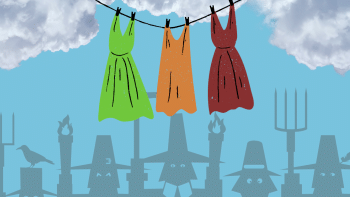

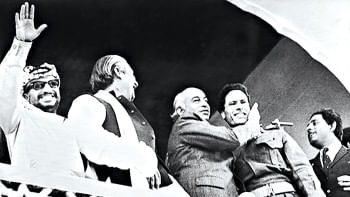


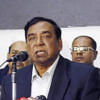
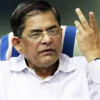




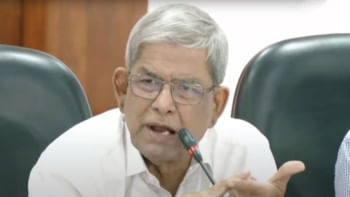
Comments